With long, windy roadways leading from N. 16th Street to their country estates, many of Omaha’s founding fathers believed they had the best locations in the city. Their exclusivity gave way to stout, proud and elaborate apartment buildings over the next half century. Eventually peeking, the strip died after the North Omaha riots of the 1960s and 70s. Today it holds little of the promise of its history, but some still shines through despite everything else. Here’s a history of North 16th Street in Omaha.
Early Times
Long before becoming a decrepit pipeline for the neglect of old North Omaha, North 16th Street had a history almost as long as the city itself. Beginning as a row of rural estates for the city’s leaders, it evolved into an important residential, commercial, and industrial byway that the city depended on.

Eventually it was annexed into Omaha, and now it blends in with the area around it. But when the Omaha Horse Railway inched passengers with a wagon and horses along the route to the old town, visitors would have seen Erastus Beadle’s house. Beadle was the town founder who moved on to a small town called Denver after his first attempt at profiteering from the west didn’t work out. The next time it did.Before anyone developed N. 16th, it was the country road that led to the old town of Saratoga. Founded in 1856, Saratoga depended on a bend in the Missouri River for its business. Although the town formally boomed and busted within two years of its founding, people kept living there.
They also would’ve seen a Presbyterian school called Talbot Hall, and an old Englishman named Richard Siemon’s brewery in Saratoga, too.
Country Estates

Starting in the 1860s, North 16th Street meandered along with a grand view of the Missouri and its broad river valley. Horse-drawn coaches would inch through the fields and forests along the way. It was along this perfect drive that the city’s original business barons built their plush country estates. They lobbied for the street to be renamed for one of their heroes from the Civil War, the decorated, ruthless Civil War general William Tecumseh Sherman. In 1879, the City of Omaha changed the name from N. 16th Street to Sherman Avenue.
In the 1880s, Andrew Poppleton built an elaborate Queen Anne mansion on his estate called “Elizabeth P1ace”. It was located on North 16th Street and Grant Avenue, then with the address 2232 Sherman Avenue. Poppleton was a famous Nebraska territorial lawyer and Omaha founding father. Many of his colleagues in business, government, and industry did the same, and that is how N. 16th originally served as a broad country road for the broad country estates of Omaha’s wealthy class.

J.J. Brown built an Italianate style brick mansion at 2225 Sherman Avenue in the 1870s. With dozens of rooms, it eventually became a hospital. Similarly, A.J. Poppleton’s 1880s mansion became a sanatarium.
In the 1870s, there was a massive flood that changed the course of the Missouri River. In addition to creating the cutoff now known as Carter Lake, it also move the river in this area to the east. The grand old mansions no longer had views of the river, and that left the wealthy old people unhappy with their views. Soon after, they started moving away and selling their land to developers.
Plush North 16th Street Apartments

Times changed. As more industry moved onto Sherman Avenue and businesses stacked onto its corners, the wealthy estate owners moved on. Moving along N. 16th in the late 19th century, a traveler would’ve seen a transforming area. Early on, there was a horse-drawn streetcar line that ran along the street for a distance. After, you would’ve seen this become a busy roadway filled with commuters riding electric streetcars and darting across the street to their homes and local businesses.

They would have seen the 1897 Sherman Apartments, one of the city’s first-ever apartment buildings, located at 2501 North 16th Street. Today, its credited as being one of the main starting points for moving North Omaha from being rural estates for rich people to becoming a packed residential area. Built reminiscent of a Greek temple with fat front columns and triangular rooftops, The Sherman stands today as a testimony to the influence of the Trans-Mississippi on the city during that period.
Another important residence was built just about 100 years ago, in 1916, at 2103 N. 16th St. Called The Margaret, these apartments were fancy, high-end rentals for the metropolitan suburbanites who lived along Sherman Avenue and commuted on the streetcar into downtown Omaha. Right across the street from The Margaret is an even more grand edifice to the area’s once luxurious lifestyles, the Strehlow Terrace. Built between 1905 and 1916, the complex included four buildings designed in the Prairie architecture style. Huddled around a courtyard and fountain, the complex was designed for professional class residents to enjoy their apartment lives. Luscious landscaping and suave marketing kept the complex fancy for some time.

Near 16th and Lake, at 2514 North 16th Street was the last notable set of rowhouses that still stands on North 16th Street. It was finished in 1929 as a small four-plex apartment building, and is being rehabilitated today. Upscale living when it was completed, each unit had murphy beds, fancy Craftsman fixtures and woodwork, and extravagant tiling throughout. It was indicative of the apartment corridor that North 16th was, and holds one of the keys to the area’s future.

There were several other upscale apartments on North 16th Street as well, including The Ivy and others.
Becoming Urban
By the beginning of the 21st century the corridor was changing. Gone by then would have been any evidence of the 1898 Trans-Mississippi Exposition. After eliminating the possibilities of hosting it at the junction of North 16th Street and J.J. Pershing Drive in East Omaha, the Expo’s businessmen-leaders selected a site along North 24th Street and bordered by North 16th Street. Extravagant buildings and grand pond of the site were all gone, but memories lingered. They lingered in the form of the Douglas County Fairgrounds and the Omaha Driving Park, both of which were located between North 16th STreet and Florence Boulevard, south of Commercial Avenue.

Just 100 years ago, driving up 16th Street from downtown Omaha into the north side was a treat for the eyes. A thriving center of the city’s most important industry of the period, which was beer, there were also important places to live and essential places to go. It’s a far cry from the fear of North Omaha that many people have today, and it deserves a closer look in the history of Omaha as a city.

One of the first and most important early big construction projects on North 16th was called the Kyner Block, and it was located on the southeast corner of 16th and Corby. The building was a two-story, half-block brick building, and had seven storefronts with six apartments on the second floor. Built in 1893 by Nebraska pioneer James Kyner, the building stayed vital for a long time. Kyner, a soldier, legislator and businessman, moved to the East Coast to become a real estate investor in 1895, but built this building in North Omaha to support the state that had invested so much in him (pic at bottom).

More than 125 years ago, Joseph S. Bauman, a German brewmaster, started the Columbia Brewery in North Omaha in 1863. Just before his death in 1876, Bauman brought Gottlieb Storz to Omaha from Germany as the brewmaster. After Bauman died, Storz bought it and expanded it vastly, eventually building the grand Storz Brewery along Sherman Avenue. Along with other companies in the city’s Big 4 brewers, Storz went on to make Omaha into a premier Midwestern beer manufacturing center in the Midwest for the next century. The brewery closed in 1972, but a portion of the original building stands today.

As cars became popular, new-fangled gas stations popped up along North 16th Street. There are a few notable gas station buildings left, including the one at North 16th and Commercial. After being built in 1914, it was abandoned as a gas station in the 1950s. According to his stepdaughter Marina Drake, in the early 1960s, George “Andy” Anderson bought the building. He ran Andy’s Transmission Service from this location and later rented it to a variety of car repair shops. Andy retired in 2010 at the age of 85. Marina writes that the building was partially damaged in a fire at about that that time.
Theaters on North 16th

In 1926, North 16th Street became home of the Corby Theater. Filled with 700 seats, there were exquisite details throughout the entire building, including marble and Italian-esque stylings in the lobby and around the entire building. After it closed in 1957, it was a storage warehouse for 40 years, opening up again in the 1990s as a nightclub. A major fire boarded up the building in 1999, and its been closed since then.
The Corby was one of EIGHT movie theaters located on North 16th Street starting in 1910, and it was the last one standing. Other theaters along the strip included four around the intersection with Locust: the It Theater, the New Star Theater, the Grand Theater and the Corby.
The Ivy Theater was located at the intersection with Burdette, and one building hosted three theaters over the years at 516 North 16th called the Cass Theater, the Holiday Theater and the Park Theater.
Busy Business and Commercial Districts

There were several important intersections along North 16th Street, each one lined with busy businesses and commercial district, and several with bustling streetcar stops and more. From Dodge Street north, they included North 16th and Cass, North 16th and California, North 16th and Cuming, North 16th and Nicholas, North 16th and Lake, North 16th and Locust, North 16th and Binney, North 16th and Commercial, North 16th and Ames and North 16th and Fort Streets.
The district from Dodge Street to Cuming Street was one of the most important in downtown Omaha. Heading north from Dodge, there were important businesses packed into four- and five story buildings. They included Stephens and Smith Clothing, a piano store called the Meinberg Company, the Omaha Book and Stationary Company, and Stewarts Seed Store. The Union Pacific Tea Company was on the next block, along with a few photographers, a funeral home, a millinery, and a furniture store, as well as the Hotel Loyal, which was at the intersection of North 16th and Capitol. The intersection of 16th and Cuming was home to the Ford Model A truck factory for nearly 20 years, and then became the location of the Tip Top Products Company, a locally-owned firm selling household wares worldwide.

The rest of the downtown stretch of North 16th was similar in its composition, including hotels, light industry and services, stores and more. There were some standout businesses, including the Omaha Bicycle Company. There were so many historical buildings located along this stretch until the 2010s that there was an idea to have it listed on the National Register of Historic Places. Unfortunately, Creighton University and several other corporations have had most of those buildings demolished, neglecting their historic importance to rebuild downtown in a new vision.

In 1891, the president of Schlitz Brewing Co. was Henry Uihleim. Uihleim came to Omaha from Milwaukee to buy real estate and establishing what would become a collection of tied houses, which were restaurants “tied” to specific breweries. Schlitz No. 3 was designed by architect Charles Kirchhoff, and built in 1897 for $5,000.
It had an iron-finished Queen Anne-style bay window, along with Romanesque-style window arches on the north side. According to Restoration Exchange Omaha, it has its original beadboard ceilings, windows and woodwork throughout. It was likely a Schlitz bar until Prohibition began Nebraska in 1917.
In addition to its apartments, Omaha’s Volunteers of America office was there for almost 15 years and housed variety stores for a long time. In 1972, Nebraska Furniture Company bought the building and spent $1,000 on a renovation. There are also stories of palm readers, bookies and other characters there. In August 2017, local architectural firm AO announced that they started working to restore the space. However, that deal must have fell through, because in January 2019 the Schlitz Tied House was demolished.
Along with this one, other tied houses on North 16th included 201 N. 16th, 414 N. 16th, 512 N. 16th, and 1023 N. 16th. Storz had a bar at the brewery, too.

Other significant intersections along North 16th included 16th and Cuming; 16th and Clark and and 16th and Ohio. The intersection of North 16th and Locust was a major commercial district where two major streetcar lines met, multiple grocery stores, drug stores, theaters and taverns were located, and several multi-story buildings were constructed. Far north, 16th and Reed was the site of a major farm stand.
Agriculture and Industry

There have been many, many agricultural and industrial developments along North 16th Street. Originally established as a farm road, Sherman Avenue was an early route for East Omaha truck farmers to get to the region downtown now known as the Old Market. Around the same time at the turn of the 20th century, agricultural interests started developing large granaries and elevators along North 16th Street.
The intersection of North 16th and Commercial Avenue was an industrial hub showing how manufacturing, railroads, and agricultural interests could converge to create a successful economic center. An extension of the Saratoga industrial area located along the Belt Line Railway, this intersection was originally home to the Holmquist Elevator serving the Omaha Road; eventually became home to several light manufacturing plants; and then a large factory was built nearby. In addition to the Belt Line run by the Missouri Pacific Railroad, there were lines for the Union Pacific, the Omaha Road and the Illinois Central nearby, too.

Immediately east was the Omaha Yard, a collection of rail lines heading north and east from the downtown rail depots. The Union Pacific Shops located at North 7th and Cuming Street made North 16th a logical commuter line for workers who lived on the North Side, and other railroads had roundhouses and other shops just east of North 16th Street.

The Tidy House Company built a large factory at North 16th and Evans Street in 1926, and it remained industrial through the 1970s. Today its a warehouse. There are other industrial sites along North 16th now, and East Omaha still has remanent agricultural sites. The large elevator built at North 16th and Commercial Avenue was demolished a decade ago, and although the Mother’s Own Flour elevator is still standing, its continued usage is questionable.
As evidenced by the loss of the industry and agricultural industries, long gone is the economic vigor that once made the street so important.
Houses Along North 16th


As much as every other purpose it has served, North 16th Street aka Sherman Avenue has been a home address to thousands of people throughout the decades. In addition to the opulent mansions and fancy apartments developed that have already been explored above, there were hundreds of single family homes constructed along the street as well. North 16th was a primary thoroughfare in North Omaha for more than a century, so these weren’t small or modest homes; instead, they were well-designed, well-built, and for many years, immaculately maintained as status symbols for the middle class families who lived in them. Several were designed by architects renowned in Omaha, including Joseph Guth and Everett Dodds.

Although there are no homes until Burdette Street today, for more than a century single family homes lined North 16th Street starting at Dodge Street. These houses were mostly two- to three-story homes, with the ones closer to Dodge built in vernacular styles and the Eastlake style starting in the 1870s. Starting at the turn of the century, many American Foursquare style were built. American Foursquare are large rectangles with large porches and dominant dormers on their top floors. Bungalow style houses are mixed in alongside these foursquares starting at Spencer Street. Most of the houses are wooden, with just a few brick homes along the way. This continues to Commercial Avenue, where the invisible barrier between East Omaha and North Omaha takes place.
Redlining African Americans

During this time, the 16th Street/Sherman Avenue corridor evolved into a more urban feeling. Nearby, the North 24th Street corridor became redlined, a segregation practice by the city’s real estate businesses designed to keep the city’s African American community separate from Whites. It was a nasty racist trick that didn’t involve laws, but everyone agreed to do it. 16th was a boundary in the redlining.
After that though, African Americans filled the area with cultural, commercial, and religious institutions. They burst with the energy and excitement of a thriving community. North 16th was bustling, too, even if devoid of a singular cultural identity. It had all the commercial vigor anyway, with department stores, specialty boutiques, and groceries lining the blocks. There were constant streetcars and private cars trolling the way, with cops and buskers on every corner.

Around the beginning of the early 20th century, at the very northern end of Sherman Avenue was a little farming community called East Omaha. It was home to a grocery, churches, and a cluster of small homes in a rural setting. Further north was the Missouri River as it bent a contour towards Saratoga. Just before the river was the little Florence Lake and a one-room country school called Beechwood School, which was brought into the Omaha School District in the 1940s. Also in this community was Sherman School, which went through various iterations before exclusively becoming an elementary school.
Learn more from my article, A History of Redlining in North Omaha.

Murray’s Carriage Repair and Second-Hand Wagons was across from The Sherman, a grand apartment building constructed in 1889 and one of the first in North Omaha. The L. Schiller Grocery and Meat Company was on the other corner, and North 16th was called Sherman Avenue. Ken’s Bar, also a Sell-Rite Liquor Store, was opened on the intersection in the 1910s. By the mid-1940s, Ken retired and then died in 1955. Mrs. Butterfield ran the place as the A-1 Bar, and stayed open until 1970. The bar was across the street from Safeway, which stayed open until the mid-60s. In the early 1970s, there were still funds being raised to decorate the corner of 16th and Lake where Ken’s originally stood. An off-beat movie theatre called Captain Nemo’s was supposed to open there, but didn’t apparently happen. The building at 2424 N. 16th Street was demolished sometime later, and today, almost 50 years later, it still sits empty.

Modern Times

Today, North 16th is a meager shadow of it’s former self. Left to rot and decay by the City of Omaha and it’s investors, it is a sore sight in need of a lot of love. The grandeur of the Trans-Mississippi, the exclusivity of upper-class lifestyles, and the upbeatness of suburban sprawl have all left the heart of this place. In their places are community depression, cyclical neglect, and local government ineptitude in the face of change. Hopefully time will emerge the champion as targeted investment renews life to old apartments and reminds Omahans of their roots.

In the meantime, we can remember that North 16th Street, aka Sherman Avenue, was ALIVE just 50 years ago and discover that part of it’s history lives in each of us who cares to learn more.
Check out the accompanying map I made!

National Register of Historic Places

Following are locations along N. 16th Street that have been placed on the National Parks Service’s National Register of Historic Places.
- Apartment Building at 2514 North 16th Street, completed in 1929, listed in 2010.
- The Sherman at 2501 North 16th Street, completed in 1897, listed in 1986.
- The Margaret at 2103 North 16th Street, completed in 1916.
- Strehlow Terrace aka Ernie Chambers Court, 2024 and 2107 North 16th Street, completed between 1905 and 1916, listed in 1986.
- Site of Trans Mississippi Exposition, North 16th to 24th Street; Pinkney to Pratt Street, completed in 1899, listed in 1981.
The Grand Theater at 2910 North 16th Street was completed in 1914, and designated as an official Omaha Landmark in 2018.
North 16th Business Directory
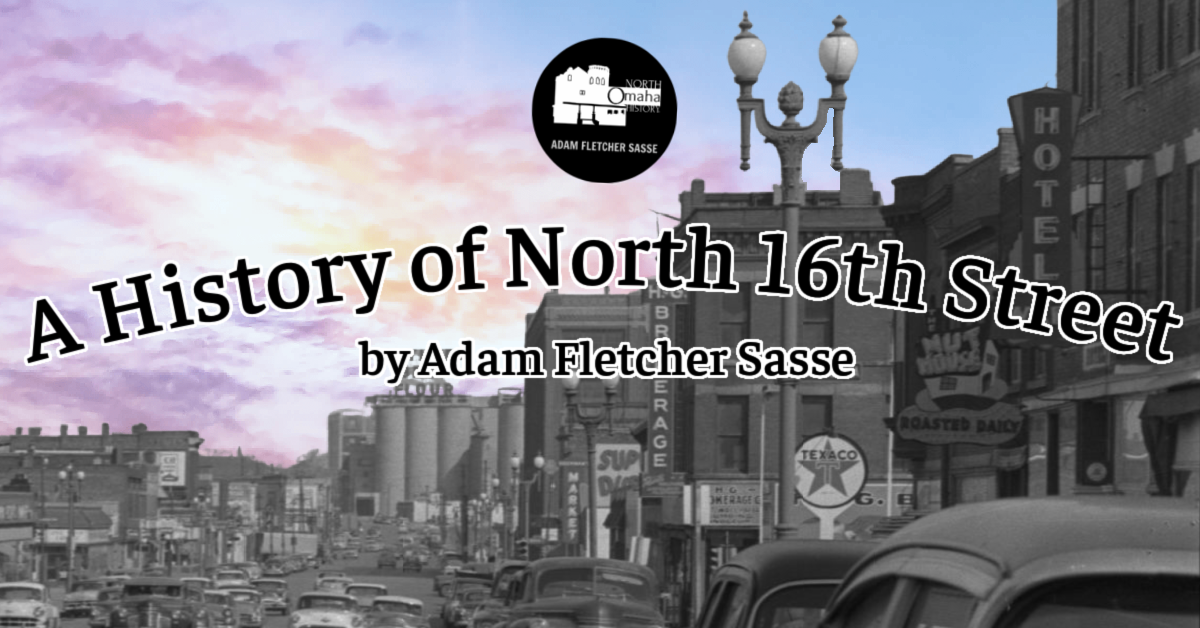
Following are businesses that were located along North 16th Street, also known as Sherman Avenue. They were located there anytime between 1880 and 1956.
- Stephens and Smith Clothing, 109 North 16th Street
- Meinberg Company, 109 North 16th Street – Pianos and organs, founded 1887.
- Kennard Glass and Paint Company, 116 North 16th Street
- Omaha Book and Stationary Company, 117 North 16th Street
- Stewarts Seed Store, 119 North 16th Street
- Union Pacific Tea Company, 204 North 16th Street
- Bowman, Hughes and Company Photographers, 205 North 16th Street
- Bonoff Sample Store, 206 North 16th Street
- Taggart and O’Shaugnessy Funeral Home, 207 North 16th Street – 1889 to 1889
- Taggart and Taggart Funeral Home, 207 North 16th Street – 1887 to 1899
- P. E. Flodman and Company, 208 North 16th Street
- Sandberg Photography, 213 North 16th Street
- Huster Millinery, 221 North 16th Street
- Hotel Loyal Building, 221 North 16th Street
- City and Loyal Furniture Shop, 223 North 16th Street
- Rudd Jewelers, 305 North 16th Street
- Burkland Tailors, 308 North 16th Street
- Burt Blacksmith, 314 North 16th Street
- Davis Clothing, 320 North 16th Street
- Omaha Bicycle Company, 323 North 16th Street
- Gross Pawn, 410 North 16th Street
- Jefferson Square Stable, 420 North 16th Street
- Gentlemen’s Grocery, 501 North 16th Street
- Cass Theater, 516 North 16th Street – Open 1936 to 1949
- Holiday Theater, 516 North 16th Street – Open in 1950
- Park Theater, 516 North 16th Street – Open 1911 to 1936
- Leslie & Leslie Funeral Home, 519 North 16th Street – 1908 to 1919
- Osthoff Sign Painting, 519 North 16th Street
- Family Wine and Liquor House, 616 North 16th Street
- Black’s Annex, 702 North 16th Street
- Gentleman & Larkin Funeral Home, 702 North 16th Street
- Hoffman & Gentleman Funeral Home, 702 North 16th Street – 1906 to 1907
- New England Furniture Company, 710 North 16th Street
- J. A. Gentleman Mortuary, 813 North 16th Street – 1909 to 1910
- P. H. Mahoney and Company, 813 North 16th Street
- G. W. Obee Funeral Home, 906 North 16th Street – 1909 to 1909
- Hollywood Spots-Lite Company at 912 North 16th Street
- Holcomb Chemical Products Company at 918 North 16th Street
- G. W. Obee Funeral Home, 1002 North 16th Street to 1910 to 1910
- Gilman Wholesale Flour, 1013 North 16th Street
- Old Fire Station, 1017 North 16th Street
- Douglass and Company Lumber, 1310 North 16th Street
- Omaha Milling Company, 1313 North 16th Street – Founded 1888
- Seaman Wagons, 1331 North 16th Street
- Omaha Brewing Association, 1421 North 16th Street
- New Market, aka White’s Market, 1425 North 16th Street
- Harmon and Weeth Coal, 1503 North 16th Street
- Omaha Updike Milling Company at 1513-23 North 16th Street
- Poppleton Mansion site, 1560 North 16th Street
- Storz Brewery, 1807 North 16th Street
- Plotkin Brothers Grocery, 2109 North 16th Street
- Ye Old Junke Shop, 2025 North 16th Street – 1960 (est) to 1979
- Robinson Grocery, 2052 North 16th Street – 1915
- Schmid and Son Meat Market, 2128 North 16th Street – 1906-1975
- Ivy Theater, 2129 North 16th Street – Open 1910 to 1919
- Wise Hospital, 2225 North 16th Street – 1902 to 1907
- J. J. Brown Mansion, 2225 North 16th Street
- Ken’s Cafe, 2304 North 16th Street
- Ken’s Bar, 2422 North 16th Street
- Omaha Funeral Home, 2412 North 16th Street – 1924 to 1925
- Simones Funeral Home, 2506 North 16th Street – 1928 to 1929
- Ohio Fish Market, 2604 North 16th Street – 19
- Tut’s Cafe, 2801 North 16th Street
- Corby Theater, 2805 North 16th Street – Open 1926 to 1957
- It Theater, 2910 North 16th Street – Open 1914 to 1916
- Grand Theater, 2910 North 16th Street – Open 1914 to 1931
- Reed’s Ice Cream, North 16th and Wirt Street
- Thorson’s Grocery, 2814 North 16th Street
- Lakeside Billards and Restaurant, 2821 North 16th Street
- B&R Food Center, 2821 North 16th Street
- King Kash Groceries, 2821 North 16th Street
- New Star Theater, 2906 North 16th Street – Open 1915 to 1925
- Wise Hospital, 3208 North 16th Street – 1901 to 1902
- Omaha Driving Park site, intersection of North 16th Street and Commercial Ave.
- Trans-Mississippi Expo sites, North 16th Street
- Brown Quick Lunch Restaurant, North 16th Street
- Governor Saunders House, 2008 North 16th Street
- Deep Rock Filling Station, 3501 North 16th Street
- Sherman Ave Grocery / Don Robinson Construction Company / Hughes Grocery / Rosenburg Grocery / Stern Grocery and Cly-Rae Cleaners / Kemp Cleaners / Super Clean Laundry, 3506 North 16th Street
- Drug Store and Colonial Heating Company, 3508 North 16th Street
- Hickell Manufacturing / Al’s Tavern / Slim’s Tavern / Flood & Turner Tavern / Top Spot Tavern / Johnny’s Lounge, 3510 North 16th Street
- Carter Lake Pharmacy, 3932 North 16th Street

You Might Like…
- A History of North Omaha’s Omaha University Campus
- A History of North Omaha’s Hospitals and Healthcare
- A History of 20 Movie Theaters in North Omaha
MY ARTICLES ABOUT THE HISTORY OF NORTH 16TH STREET
Places: 16th and Locust Historic District | Charles Street Bicycle Park | State Bar and McKenna Hall | Storz Brewery | Warden Hotel | Grand Theater | Nite Hawkes Cafe | Tidy House Products Company | 2621 N. 16th St. | New Market | 3702 N. 16th St. | Sebastopol Amphitheater
Historic Homes: J.J. Brown Mansion | Poppleton Mansion | Governor Alvin Saunders Estate | Ernie Chambers Court aka Strehlow Terrace | The Sherman Apartments | The Climmie Apartments
Neighborhoods: Near North Side | Lake Street | Kountze Place | Saratoga | Sulphur Springs | Sherman
Events: 1898 Trans-Mississippi and International Exposition | 1899 Greater America Exposition | 1960s North Omaha Riots | “Siege of Sebastopol”
MY ARTICLES ABOUT THE HISTORY OF KOUNTZE PLACE
General: Kountze Place | Kountze Park | North 16th Street | North 24th Street | Florence Boulevard | Wirt Street | Emmet Street | Binney Street | 16th and Locust Historic District
Houses: Charles Storz House | Anna Wilson’s Mansion | McCreary Mansion | McLain Mansion | Redick Mansion | John E. Reagan House | George F. Shepard House | Burdick House | 3210 North 21st Street | 1922 Wirt Street | University Apartments
Churches: First UPC/Faith Temple COGIC | St. Paul Lutheran Church | Hartford Memorial UBC/Rising Star Baptist Church | Immanuel Baptist Church | Calvin Memorial Presbyterian Church | Omaha Presbyterian Theological Seminary | Trinity Methodist Episcopal | Mount Vernon Missionary Baptist Church | Greater St. Paul COGIC
Education: Omaha University | Presbyterian Theological Seminary | Lothrop Elementary School | Horace Mann Junior High
Hospitals: Salvation Army Hospital | Swedish Hospital | Kountze Place Hospital
Events: Trans-Mississippi and International Exposition | Greater America Exposition | Riots
Businesses: Hash House | 3006 Building | Grand Theater | 2936 North 24th Street | Corby Theater
Listen to the North Omaha History Podcast show #4 about the history of the Kountze Place neighborhood »
Elsewhere Online
- North Omaha History Podcast Episode 6: North 16th Street, pt I – Adam Fletcher Sasse drives us down North 16th Street, starting in the 1850s when it was a country road leading to the old town of Saratoga. We get a bird’s eye view of the mansions that once lined this grand way – also known as Sherman Avenue. (March 27, 2017; mins) Listen online or Download on iTunes
- North Omaha History Podcast Episode 7: North 16th Street, pt II – Adam continues his tour of N16th St as it transitions from luxury mansions to plush apartments that still stand to this day. He also gives us a tour of the Storz brewery and the center of commerce that was at 16th & Locust. (April 3, 2017) Listen Online or download on iTunes.

BONUS PICS!









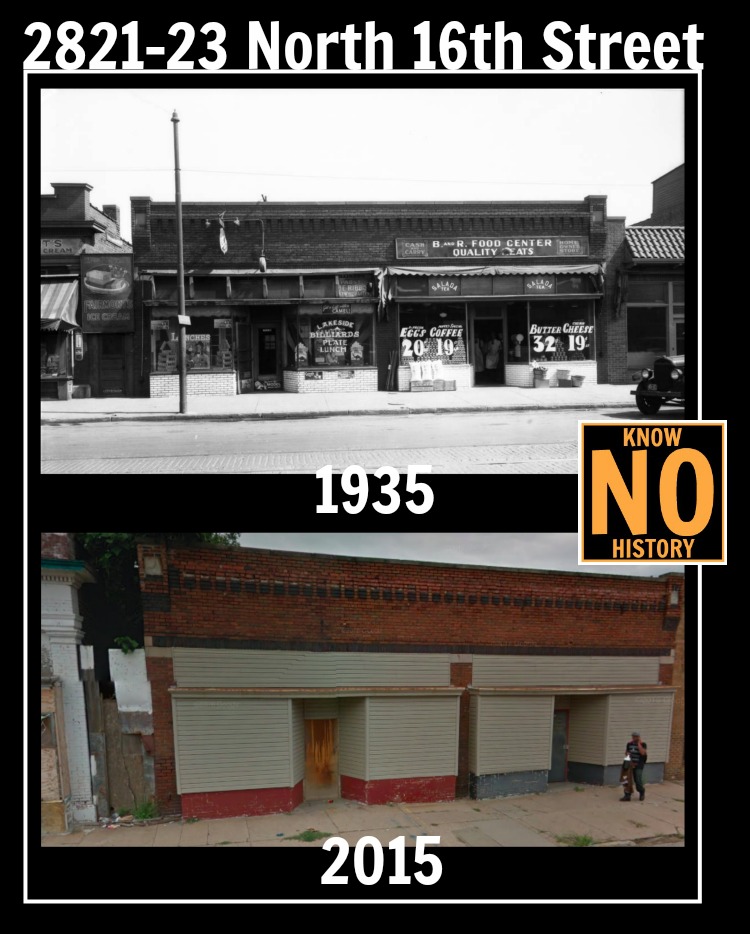

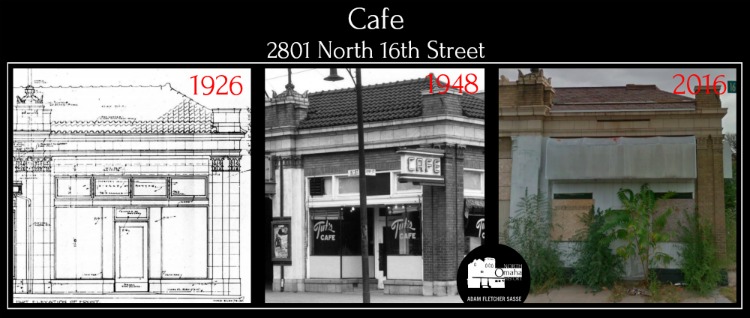






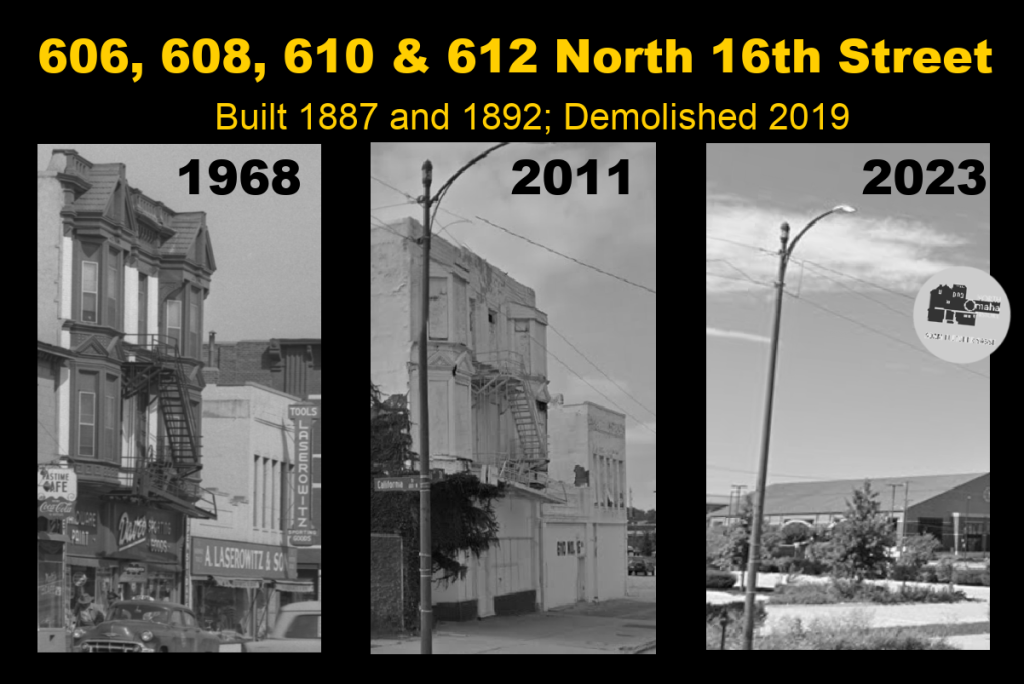
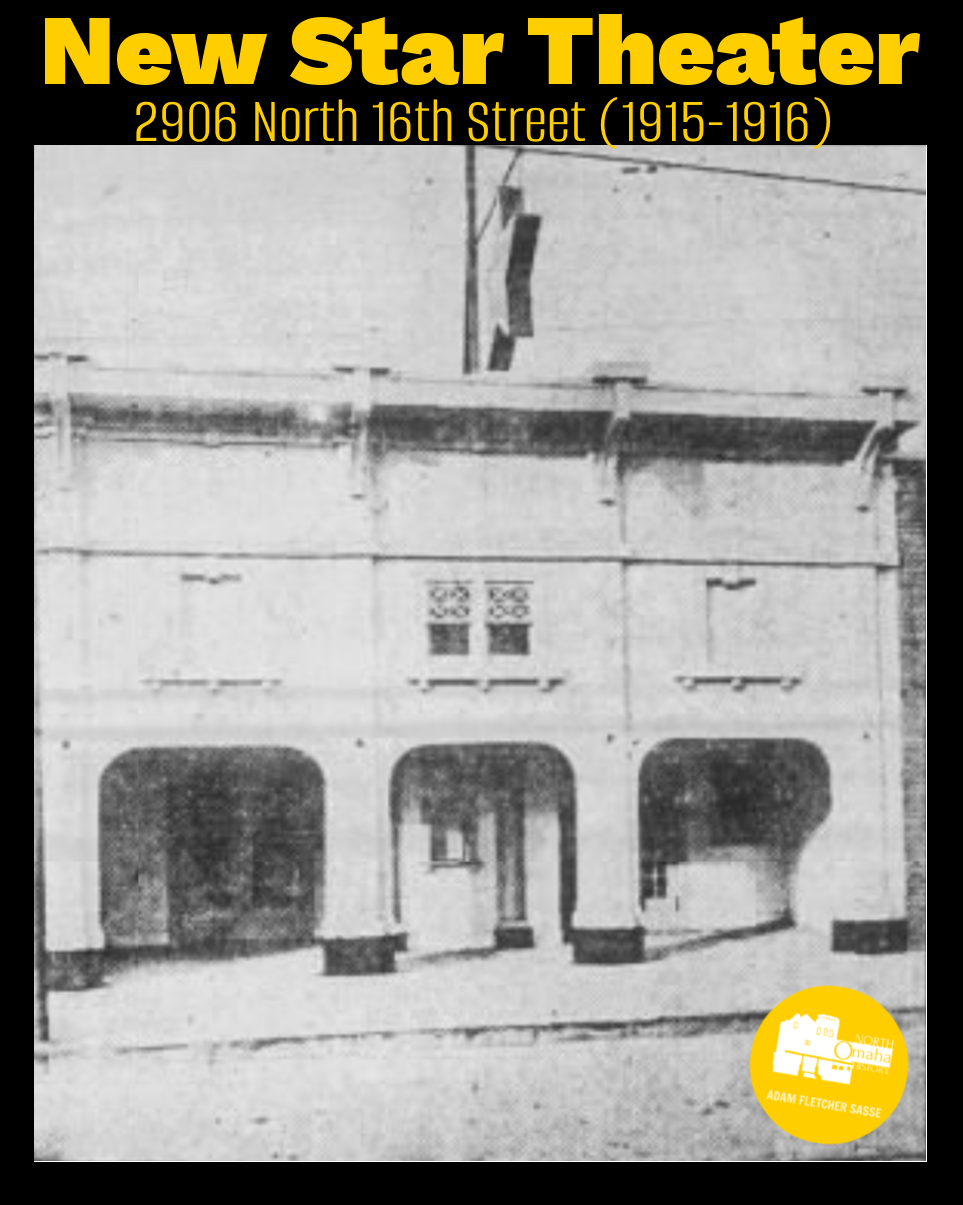





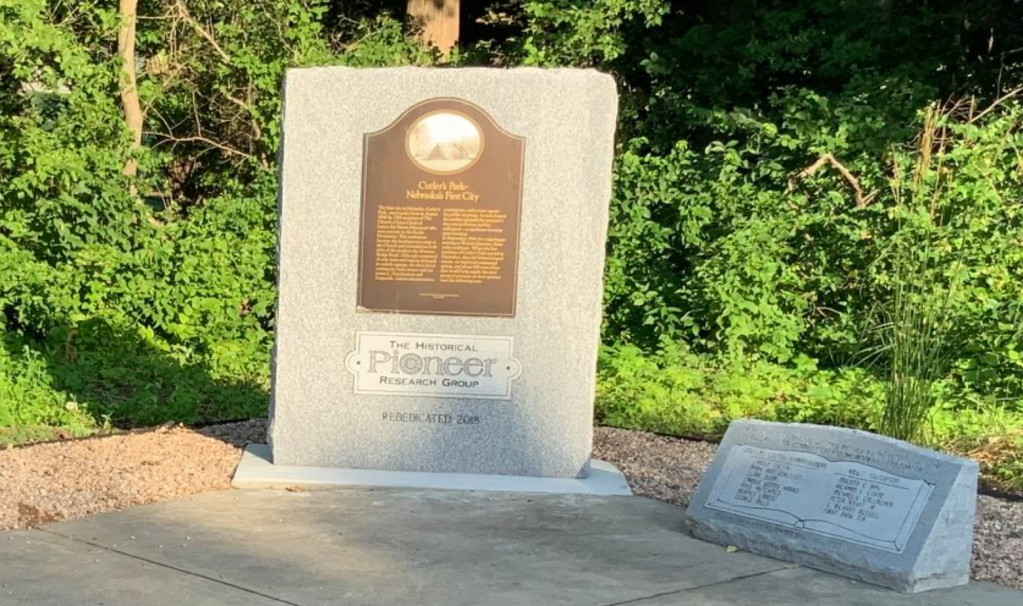
Leave a comment